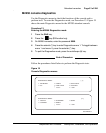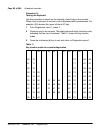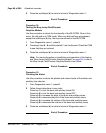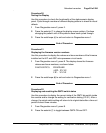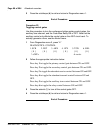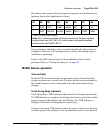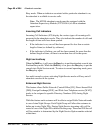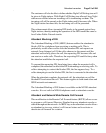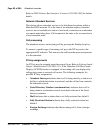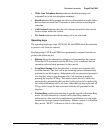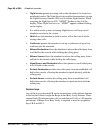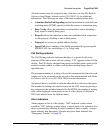
Attendant consoles Page 89 of 504
Telephones and Consoles Description, Installation, and Operation
The failure codes produced by the firmware in response to the detection of a
hardware fault are bit-significant as follows:
In most instances, the failure code accurately identifies the faulty hardware
component. However, if the microprocessor is faulty, the readings may be
unreliable or misleading.
Failure code A0H is always shown if the loopback test has not been
performed. Refer to “Testing the data port” on page 83.
M2250 feature operation
Time and date
On the M2250, the time and date are automatically downloaded from the
system on power-up or console reset. The time and date are downloaded by
the switch whenever it runs a lamp audit. Only the visual format can be
changed.
Trunk Group Busy indicators
Trunk Group Busy (TGB) indicators show the status of each group of trunks.
If a TGB indicator is on steadily, the attendant has busied out all trunks in that
group by pressing the Shift key plus the TGB key. If a TGB indicator is
flashing, all the trunks in that group are actually busy.
In Supervisory mode, TGB indicators show the status of other consoles in the
customer group. If the indicator is off, the attendant position is in a Position
B7 B6 B5 B4 B3 B2 B1 B0
0 PSG RTC RAM KEYS c2* c1* c0*
1 ASIP RS-232 A44#3 A44#2 A44#1 UART RAM
* Refers to key’s column number.
Note: Bit 7 indicates whether the failure occurred on the user interface
printed circuit card (UIP) (B7=0) or on the audio and system interface
printed circuit card (ASIP) (B7=1).



